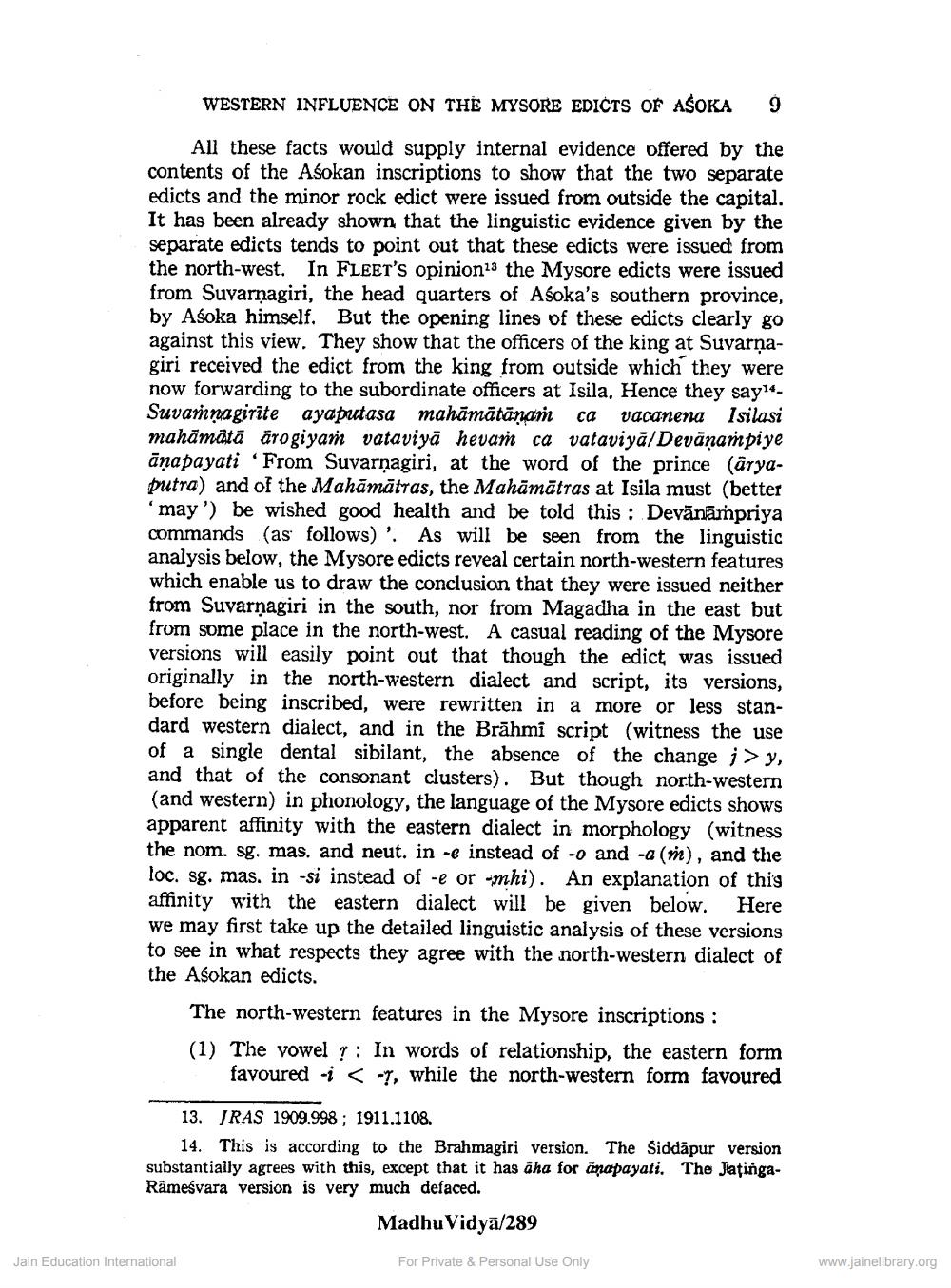________________
WESTERN INFLUENCE ON THE MYSORE EDICTS OF ASOKA
9
All these facts would supply internal evidence offered by the contents of the Asokan inscriptions to show that the two separate edicts and the minor rock edict were issued from outside the capital. It has been already shown that the linguistic evidence given by the separate edicts tends to point out that these edicts were issued from the north-west. In FLEET's opinion13 the Mysore edicts were issued from Suvarnagiri, the head quarters of Asoka's southern province, by Asoka himself. But the opening lines of these edicts clearly go against this view. They show that the officers of the king at Suvarnagiri received the edict from the king from outside which they were now forwarding to the subordinate officers at Isila, Hence they say14Suvarnagirite ayaputasa mahāmātānam ca vacanena Isilasi mahāmatā arogiyan vataviyā hevam ca vataviyā/Devānampiye āņapayati From Suvarnagiri, at the word of the prince (āryaputra) and of the Mahāmātras, the Mahāmātras at Isila must (better 'may') be wished good health and be told this : Devānāmpriya commands (as follows)'. As will be seen from the linguistic analysis below, the Mysore edicts reveal certain north-western features which enable us to draw the conclusion that they were issued neither from Suvarnagiri in the south, nor from Magadha in the east but from some place in the north-west. A casual reading of the Mysore versions will easily point out that though the edict was issued originally in the north-western dialect and script, its versions, before being inscribed, were rewritten in a more or less standard western dialect, and in the Brāhmi script (witness the use of a single dental sibilant, the absence of the change i>y, and that of the consonant clusters). But though north-western (and western) in phonology, the language of the Mysore edicts shows apparent affinity with the eastern dialect in morphology (witness the nom. sg. mas. and neut. in -e instead of -o and -a (m), and the loc. sg. mas. in -si instead of -e or -mhi). An explanation of this affinity with the eastern dialect will be given below. Here we may first take up the detailed linguistic analysis of these versions to see in what respects they agree with the north-western dialect of the Asokan edicts.
The north-western features in the Mysore inscriptions : (1) The vowel 1: In words of relationship, the eastern form
favoured -i < -7, while the north-western form favoured
13. JRAS 1909.998 ; 1911.1108.
14. This is according to the Brahmagiri version. The Siddapur version substantially agrees with this, except that it has āha for inapayati. The JatingaRameśvara version is very much defaced.
Madhu Vidyā/289
Jain Education International
For Private & Personal Use Only
www.jainelibrary.org




